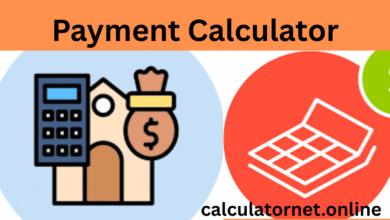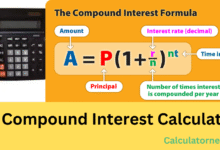Amortization Calculator
Contents
- 1 Amortization Calculator: Your Guide to Smarter Loan Payments
- 1.1 What is Amortization?
- 1.2 How an Amortization Calculator Works
- 1.3 The Power of an Amortization Schedule
- 1.4 Amortization vs. Other Types of Debt
- 1.5 Frequently Asked Questions
- 1.5.1 What is the difference between amortization and depreciation?
- 1.5.2 How does an amortization calculator help me save money?
- 1.5.3 Can I use a calculator for a credit card?
- 1.5.4 What is an amortization schedule?
- 1.5.5 Why do I pay more interest at the beginning of my loan?
- 1.5.6 Does an amortization schedule include fees?
- 1.5.7 Are fixed-rate or adjustable-rate mortgages better for an amortization schedule?
- 1.6 Conclusion
Amortization Calculator

Loan Details
Amortization Schedule
Summary
Total Interest Paid
Total Payments
Payoff Date
| # | Date | Principal | Interest | Balance |
|---|
My Bank Details
Name: Majid Farooq
Bank Name: Habib Bank Limited
Account Number/IBAN: PK40HABB0001947100292703
Country: Pakistan
Amortization Calculator: Your Guide to Smarter Loan Payments
An amortization calculator isn’t just a simple tool—it’s your key to financial clarity. Have you ever wondered why your early loan payments seem to barely touch the principal, or how much you could save by paying a little extra each month? The world of loans can feel overwhelming, but understanding amortization is the first step toward taking control of your debt. This guide will walk you through what amortization is, how a calculator works, and how this knowledge can help you make smarter financial decisions, whether you’re paying off a mortgage, a car loan, or managing business expenses.
What is Amortization?
The word amortization can be defined in two ways. The first and most common definition is the process of paying off a loan with regular, structured payments over a set period. Think of your monthly mortgage payment or car loan bill. Each payment is a blend of two things:
- Principal: The actual amount of money you borrowed.
- Interest: The cost of borrowing that money, calculated on your remaining balance.
In the beginning, a larger portion of your payment goes toward interest, and a smaller portion goes toward the principal. As your principal balance decreases, the interest portion of your payment also shrinks, and more of your money goes directly toward paying off the loan.
The second definition of amortization is used in business accounting. It involves spreading the cost of an expensive, long-lived asset over its useful life. This is often done for intangible assets like patents, copyrights, or goodwill. This accounting method prevents a business from taking a huge financial hit in one year for a big purchase, instead distributing the cost over many years.
How an Amortization Calculator Works
An amortization calculator is a powerful tool that helps you visualize your loan repayment plan. By entering a few key pieces of information, you can instantly see a complete breakdown of your loan.
The main inputs for a calculator are:
- Loan amount: The total amount you borrowed.
- Loan term: The length of time you have to pay back the loan (e.g., 15 years, 30 years).
- Interest rate: The percentage rate you’re paying on the loan.
Once you enter this data, the calculator generates an amortization schedule. This schedule is a table that shows every single payment you will make, detailing how much goes to principal and how much goes to interest for each payment period.
The Power of an Amortization Schedule
An amortization schedule isn’t just a bunch of numbers; it’s a financial roadmap. It clearly shows you how your loan balance decreases over time and how the ratio of principal to interest shifts with each payment.
This powerful insight allows you to:
- Visualize your debt: You can see exactly how many payments it will take to pay off the loan and what your remaining balance will be at any point.
- Plan extra payments: By using a calculator that allows for extra payments, you can see exactly how much time and interest you can save by paying more than the minimum. Even a small extra payment can knock years off a long-term loan like a mortgage.
- Understand your true cost: The calculator shows you the total amount of interest you’ll pay over the life of the loan. This can be a real eye-opener and motivate you to pay it off faster.
Amortization vs. Other Types of Debt
It’s important to know that not all loans are amortized. Some common examples of non-amortized debt include:
- Credit cards: These are a form of revolving debt where you can carry a balance from month to month, and the amount you pay can vary.
- Interest-only loans: For a specific period, you only pay the interest on the loan, with the principal remaining untouched.
- Balloon loans: These have a large, one-time principal payment due at the end of the loan term.
Knowing the difference is crucial for effective debt management.
Frequently Asked Questions
What is the difference between amortization and depreciation?
Amortization is an accounting practice for intangible assets (like patents and copyrights), while depreciation is a similar practice used for tangible assets (like machinery and vehicles). Both are used to spread the cost of an asset over its useful life.
How does an amortization calculator help me save money?
An amortization calculator helps you save money by showing you the impact of making extra principal payments. By paying even a small amount more each month, you can significantly reduce the total interest you pay and shorten your loan term.
Can I use a calculator for a credit card?
No, an amortization calculator is not suitable for credit cards because credit cards are a form of revolving debt, not a fixed-term, amortized loan. For credit cards, you should use a credit card payoff calculator instead.
What is an amortization schedule?
An amortization schedule is a table that details each periodic payment of a loan, showing how much of each payment goes toward the principal and how much goes toward interest. It also tracks the remaining balance after each payment.
Why do I pay more interest at the beginning of my loan?
Interest is calculated on your remaining principal balance. At the start of a loan, your principal is at its highest, so the interest portion of your payment is also at its highest. As you pay down the principal, the interest you owe decreases.
Does an amortization schedule include fees?
No, a basic amortization schedule typically does not include fees or other charges. It focuses solely on the breakdown of principal and interest payments for the loan itself.
Are fixed-rate or adjustable-rate mortgages better for an amortization schedule?
Amortization schedules work best for fixed-rate loans because the interest rate never changes. For adjustable-rate mortgages (ARMs), the schedule would need to be re-calculated each time the interest rate changes.
Conclusion
Understanding amortization is a fundamental part of responsible borrowing and financial management. By using an amortization calculator, you transform a complex loan into a clear, manageable plan. It empowers you to see the real cost of your debt and make proactive choices that can save you thousands of dollars and get you out of debt faster. The next time you’re considering a loan, use this valuable tool to chart your course to financial freedom.
What’s your biggest takeaway from using an amortization calculator? Share your thoughts in the comments below!








